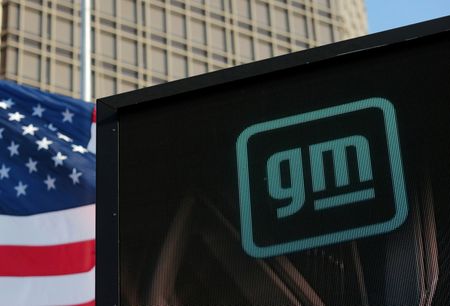By David Shepardson
WASHINGTON (Reuters) -U.S. auto safety regulators said on Friday they have opened a formal safety probe into the autonomous driving system in vehicles produced by General Motors Co’s robotaxi unit Cruise LLC after reports of two injuries in rear-end crashes.
The National Highway Traffic Safety Administration (NHTSA) said it has received notices of incidents in which self-driving Cruise vehicles “may engage in inappropriately hard braking or become immobilized.”
The agency said while both issues “appear to be distinct, they each result in the Cruise vehicles becoming unexpected roadway obstacles.” The safety agency’s preliminary evaluation covers 242 Cruise autonomous vehicles and is the first step before it could seek a recall.
The investigation follows reports of three crashes in which Cruise vehicles were struck from behind by other vehicles after the autonomous vehicles braked quickly.
Cruise is offering limited service in San Francisco with a small fleet of Chevrolet Bolt EVs. Cruise on Thursday announced it had secured the first of the two California permits it needs to charge riders night and day across all of San Francisco, where it currently sells trips in a small part of the city.
Cruise said it has “driven nearly 700,000 fully autonomous miles in an extremely complex urban environment with zero life-threatening injuries or fatalities. … There’s always a balance between healthy regulatory scrutiny and the innovation we desperately need to save lives, which is why we’ll continue to fully cooperate with NHTSA or any regulator in achieving that shared goal.”
NHTSA said it plans to fully assess the potential safety-related issues posed by these two types of incidents and will review “the commonality and safety logic of the hard braking incidents” and the “frequency, duration and safety consequences associated with the vehicle immobilization incidents.”
GM shares were down 3.5% Friday at $36.31 in midday trading.
San Francisco officials did not immediately comment Friday on the NHTSA investigation, which could be a setback to the company’s deployment plans.
Last month, Cruise Chief Operating Officer Gil West told Reuters the company plans to enter a “large number of markets” and scale operations up to “thousands of vehicles” in 2023.
NHTSA said the issues “may introduce multiple potential hazards such as a collision with a Cruise vehicle, risk to a stranded passenger exiting an immobilized Cruise vehicle, or obstruction of other traffic including emergency vehicles.”
The agency said it has three reports of Cruise vehicles’ automated driving system “initiating a hard braking maneuver in response to another road user that was quickly approaching from the rear. In each case, the other road user subsequently struck the rear of the ADS-equipped vehicle.”
Cruise said police did not ticket their vehicles in any of the three crashes.
NHTSA said it has been notified of multiple reports involving Cruise vehicles operating without onboard human supervision becoming immobilized, which “may strand vehicle passengers in unsafe locations, such as lanes of travel or intersections, and become an unexpected obstacle to other road users.”
Cruise in September recalled and updated software in 80 self-driving vehicles after a June crash in San Francisco that left two people injured. NHTSA said the recalled software could “incorrectly predict” an oncoming vehicle’s path. Cruise said it had determined this unusual scenario would not recur after the update.
GM and Cruise in February disclosed they petitioned the NHTSA for permission to deploy some self-driving vehicles without steering wheels, mirrors, turn signals or windshield wipers. That petition is still pending.
(Reporting by David Shepardson; editing by Emelia Sithole-Matarise, Chizu Nomiyama and Jonathan Oatis)

